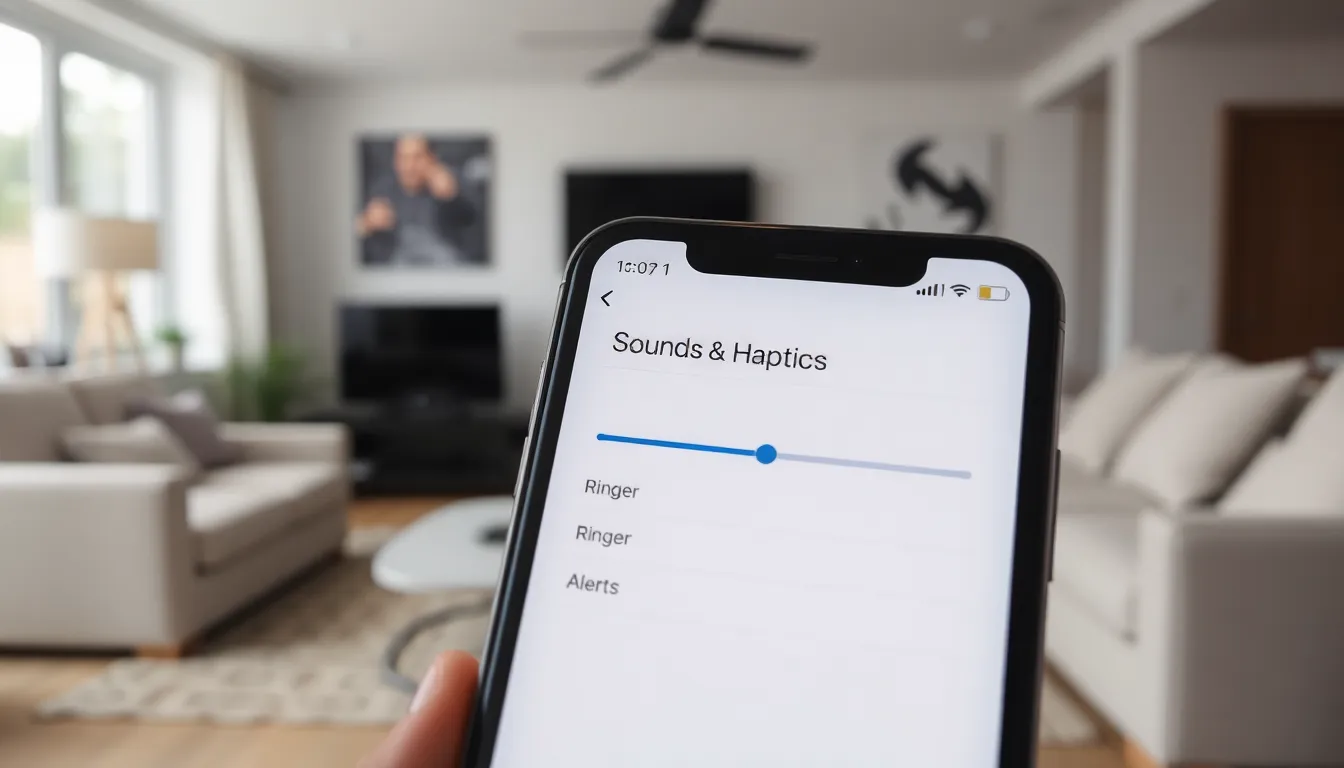Is your iPhone whispering sweet nothings when it should be blasting your favorite tunes? If you’ve ever found yourself straining to hear that catchy chorus or missing out on important calls, you’re not alone. Many iPhone users face the daily struggle of low volume, but fear not—turning up the volume is easier than finding a cat video on the internet.
Table of Contents
ToggleUnderstanding Your iPhone’s Volume Controls
Navigating volume controls on an iPhone involves both hardware buttons and software settings. Each method provides a simple way to adjust audio levels for music, calls, and alerts.
Hardware Buttons
Volume control starts with the physical buttons located on the left side of the device. The upper button increases the volume, while the lower button decreases it. Users can press these buttons repeatedly for quick adjustments. The screen displays an on-screen indicator showing current volume levels. Pressing either button during music playback or calls adjusts the audio instantly, providing real-time feedback.
Software Settings
Accessing volume settings through software offers additional control. Users can navigate to Settings, then select Sounds & Haptics. Among the options, the Ringer and Alerts slider allows for precise adjustments. Adjusting this slider affects notifications and calls. For audio apps, such as Apple Music, in-app volume controls exist and can be used independently of the main system volume. All these settings ensure users enjoy a customized audio experience.
Adjusting Volume Through Settings

Adjusting volume through settings allows for a tailored audio experience on an iPhone. Users can modify various sound settings to enhance their listening experience.
Accessing Sound Settings
To access sound settings, open the Settings app. Tap on the “Sounds & Haptics” option. This section displays several controls for ringer and alerts. Users can also find settings for vibration patterns here, enabling a more customized experience for calls and notifications.
Modifying Volume Levels
Modifying volume levels is straightforward. Use the slider under “Ringer and Alerts” to control the volume. Increasing the slider adjusts the audio for phone calls and alerts. For media, navigate to the “Media” section within the same menu. Users can also adjust audio levels for specific apps by using the volume controls while the app is in use, allowing for precise adjustments suitable for different audio scenarios.
Using Accessibility Features
Accessibility features on iPhones enhance the audio experience for those with hearing challenges. Users can access these features to improve sound quality and ensure notifications are easily heard.
Hearing Accommodations
Hearing accommodations provide essential options for those who are hard of hearing. The “Hearing” section, found in the Accessibility menu, offers enhancements like “Sound Recognition.” This feature alerts users to specific sounds, such as doorbells or alarms. Users can enable “Mono Audio,” which combines stereo sound into a single channel. This setting makes hearing easier through headphones or speakers.
Custom Audio Adjustments
Custom audio adjustments allow users to tailor their audio settings. The “Audio/Visual” section enables adjustments to balance audio for left and right channels. Users can also enable “Phone Noise Cancellation,” reducing background noise during calls. Additionally, “Headphone Accommodations” provides options for amplifying soft sounds and adjusting frequencies. Using these features allows individuals to create a personalized audio environment that suits their preferences.
External Accessories
Using external accessories can significantly enhance the audio experience on an iPhone. Bluetooth and wired options both offer ways to improve volume clarity and output.
Bluetooth Speakers
Bluetooth speakers provide portable and powerful audio solutions. Users can easily connect these speakers wirelessly to their iPhones, offering immediate sound amplification. Many Bluetooth speakers include built-in volume controls, allowing straightforward adjustments without needing to access the iPhone’s settings. Various models offer features such as waterproof designs, long battery lives, and superior sound quality, making them versatile for indoor and outdoor use. Examples include the JBL Charge series and Bose SoundLink speakers, known for their impressive sound performance. Users often appreciate the improved bass response and volume levels that enhance music and media playback.
Wired Headphones
Wired headphones deliver a reliable and consistent audio experience. Users connect via the Lightning port or 3.5mm headphone jack, depending on the iPhone model. Enhanced sound quality often results from a direct connection, eliminating latency issues found in wireless devices. Many models feature inline volume controls, enabling users to adjust the sound without touching the device. Popular brands like Sony and Sennheiser offer headphones that provide rich audio and clear highs, appealing to audiophiles. Comfort and sound isolation are also key attributes, allowing longer listening sessions without distraction.
Troubleshooting Volume Issues
Volume issues can hinder the audio experience on an iPhone. Identifying common problems helps users determine the cause of low sound output.
Common Problems
Muted settings often lead to unexpected silence. Users may accidentally trigger the silent mode switch located on the side of the device. Audio settings might not reflect desired adjustments if users overlook the specific app volume control settings. In some instances, Bluetooth connections can cause volume discrepancies if the device hasn’t connected correctly. Damage to headphones or speakers can limit sound quality, affecting overall listening experiences.
Solutions and Fixes
Check the mute switch first to ensure it is not activated. Access the Control Center for quick verification of sound settings. If sound issues persist, users can reset the volume settings in the “Sounds & Haptics” menu. Disconnect and reconnect Bluetooth devices to refresh the connection. Restarting the iPhone often resolves temporary glitches affecting volume. Consider testing audio with various headphones or speakers to identify hardware-related faults. Keeping the iOS updated ensures that users benefit from the latest fixes and enhancements.
Getting the most out of an iPhone’s audio capabilities is essential for enjoying music calls and media. By utilizing both hardware and software volume controls users can easily adjust sound levels to their preference. Accessibility features further enhance this experience catering to individual needs.
Incorporating external accessories like Bluetooth speakers or wired headphones can also elevate audio quality. If volume issues arise troubleshooting steps can quickly resolve common problems ensuring a seamless listening experience. With these tips users can confidently navigate their iPhone’s audio settings and enjoy a tailored sound experience.








